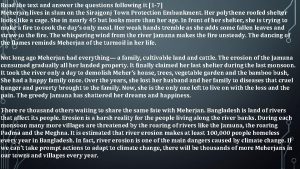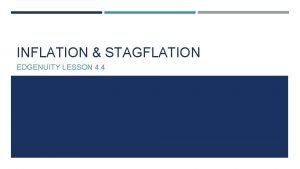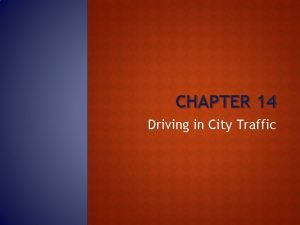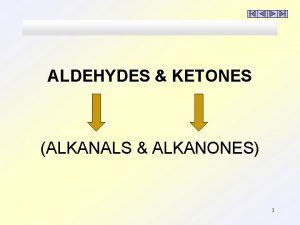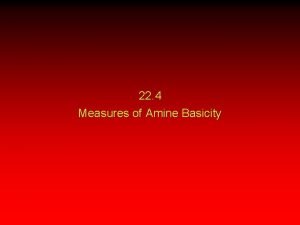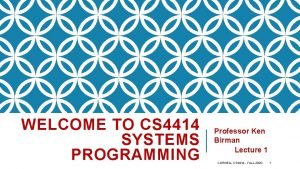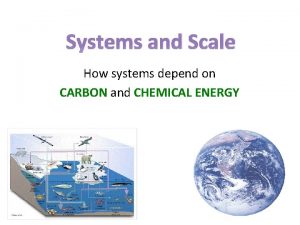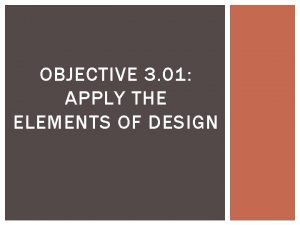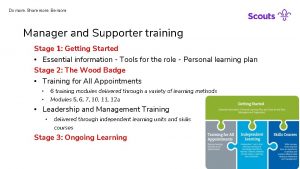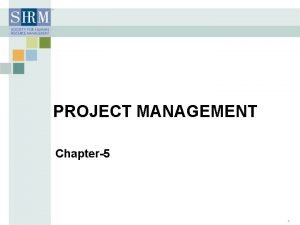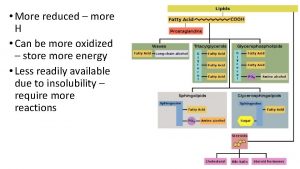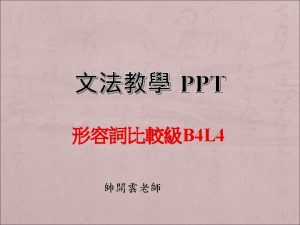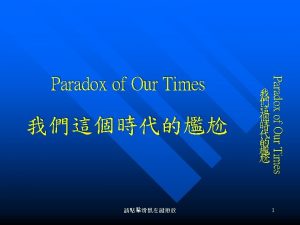Why Project Management Chapter 1 and More Project


































- Slides: 34

Why Project Management? (Chapter 1 and More)

Project Management Overview This material is based on the Fifth Edition of the Guide to the Project Management Body of Knowledge (PMBOK® Guide*) published by the Project Management Institute (PMI*) in 2013. *PMI and PMBOK are registered marks of Project Management Institute, Inc. 2

Learning Objectives After completing this chapter, students will be able to: �Understand why project management is becoming such a powerful and popular practice in business. �Recognize the basic properties of projects, including their definition. �Understand why effective project management is such a challenge. �Differentiate between project management practices and more traditional, process-oriented business functions. �Recognize the key motivators that are pushing companies to adopt project management practices. 01 -02

CONTENTS • • Module 1: Elements of Project Management Module 2: The Project Management Context Module 3: Project Organizational Influences Module 4: The I/S Organizational Context 4

Elements of Project Management 5

Project Management Institute (PMI®) • The world’s leading project management professional organization • Administers the globally recognized PMP® (Project Management Professional) certification • Publishes the Guide to the Project Management Body of Knowledge – known more colloquially as the PMBOK® Guide • The material in this series is based on the 5 th Edition of the PMBOK® Guide *PMI, PMP and PMBOK are registered marks of Project Management Institute, Inc. 6

What is a Project? A project has: • • Requirements A Schedule A Budget Closure Criteria 7

Elements of Projects • Complex, one-time processes • Limited by budget, schedule, and resources • Developed to resolve a clear goal or set of goals • Customer-focused 01 -08

Process vs. Project Work • • • Process Ongoing, day-to-day activities to produce goods and services Use existing systems, properties, and capabilities Typically repetitive Project �Take place outside the normal, process-oriented world �Unique and separate from routine, process-driven work �Continually evolving A project is a temporary endeavor undertaken to create a unique product or service. 01 -09

Project Management … Project management is the application of knowledge, skills, tools, and techniques to project activities to meet project requirements. Guide to the Project Management Body of Knowledge (PMBOK® Guide) 10

Project Definitions Summarized A project can be considered any series of activities and tasks that have: �Specific objectives to be completed within certain specifications, �Defined start and end dates, �Funding limits, �Human and nonhuman resources, and �Multifunctional focus. 01 -011

Elements of Projects • Complex, one-time processes • Limited by budget, schedule, and resources • Developed to resolve a clear goal or set of goals • Customer-focused 01 -012

General Project Characteristics • Entail crossing functional and organization boundaries • Traditional management functions of planning, organizing, motivating, directing, and controlling apply • Principal outcomes are the satisfaction of customer requirements within technical, cost, and schedule objectives • Terminated upon successful completion of performance objectives 01 -13

Project Success Rates Software & hardware projects fail at a 65% rate, Over half of all IT projects become runaways, Only 30% of technology-based projects and programs are a success. Only 2. 5% of global businesses achieve 100% project success and over 50% of global business projects fail, • Average success of business-critical application development projects is 32%, and • Approximately 42% of the 1, 200 Iraq reconstruction projects were eventually terminated due to mismanagement or shoddy construction • • 01 -14

Why are Projects Important? 1. Shortened product life cycles 2. Narrow product launch windows 3. Increasingly complex and technical products 4. Emergence of global markets 5. Economic period marked by low inflation 01 -15

Project Life Cycles Man Hours Conceptualization Planning Execution Fig 1. 3 Project Life Cycle Stages 01 -16 Termination

Project Life Cycles • Conceptualization - the development of the initial goal and technical specifications. • Planning – all detailed specifications, schedules, schematics, and plans are developed • Execution – the actual “work” of the project is performed • Termination – project is transferred to the customer, resources reassigned, project is closed out. 01 -17

Four Dimensions of Project Success 01 -18 FIGURE 1. 7

Six Criteria for IT Project Success • System quality • Information quality • User satisfaction • Individual impact • Organizational impact 01 -19

A Sampling of Project Management Tasks a. Insuring involvement of all stakeholders a. Resource allocation a. Resource planning a. Schedule planning a. Monitoring progress of the work and adjusting the work plan accordingly a. Team development and leadership a. Risk management a. Managing client and customer interactions and expectations a. Change management 20

Importance of Processes • The effective and reliable application of knowledge and skills is greatly enhanced by a well-defined set of processes • Such a set of processes can help to ensure that the application of the appropriate knowledge skills repeatedly produces the desired outcomes over a wide range of project types as well as over a wide range of project teams. • In short, robust and well-defined processes are a key component to ensuring high degrees of predictability and repeatability in the successful management of projects within any organization 21

Definition of a Process A systematic series of activities directed towards causing an end result, such that one or more inputs will be acted upon to create one or more outputs. Guide to the Project Management Body of Knowledge (PMBOK® Guide) 22

Accomplishing Tasks through Processes § The PMBOK® Guide identifies a total of 47 fundamental project management processes § These processes are logically grouped in two complementary ways: by major process group and by project management knowledge area § There are five process groups § There are ten knowledge areas § The knowledge areas are integrated across various process groups 23

Project Manager Responsibilities 1. Selecting a team 2. Developing project objectives and a plan for execution 3. Performing risk management activities 4. Cost estimating and budgeting 5. Scheduling 6. Managing resources 01 -24

Knowledge Areas Integration Management Project Management Process Groups Initiating • Develop Project Charter Planning • Develop Project Management Plan • • • • Scope Management Time Management Cost Management Quality Management Executing • Direct and Manage Project Work Plan Scope Management Collect Requirements Define Scope Create WBS Plan Schedule Management Define Activities Sequence Activities Estimate Activity Resources Estimate Activity Durations Develop Schedule Plan Cost Management Estimate Costs Determine Budget • Plan Quality Management Human Resource Management • Plan Human Resource Management Communications Management • Plan Communications Management Monitoring/Controlling • Monitor and Control Project Work • Perform Integrated Change Control • Control Schedule Adapted from PMBOK® Guide • Control Costs • Perform Quality Assurance • Acquire Project Team • Develop Project Team • Manage Communications • Control Quality • Control Communications • Control Risks Risk Management Procurement Management • Plan Procurement Management • Conduct Procurements • Control Procurements • Plan Stakeholder Management • Manage Stakeholder Engagement • Control Stakeholder Engagement • Identify Stakeholders • Close Project or Phase • Validate Scope • Control Scope • • • Stakeholder Management Closing Plan Risk Management Identify Risks Quantitative Risk Analysis Qualitative Risk Analysis Plan Risk Responses • Close Procurements

The Five Project Management Process Groups Monitoring/Controlling Planning Closing Initiating Executing Adapted from the Guide to the Project Management Body of Knowledge (PMBOK® Guide) 26

Process Groups are not Phases • It is important to make a basic point: The project management process groups are not project phases • It is often tempting to identify phases and process groups, but there are some distinct differences between the two • A primary difference is that the process groups are inter-related in more essential ways than phases • In fact the Planning, Executing, and Controlling/Monitoring process groups have an inherent iterative relationship in all projects 27

The Iterative Heart of the Matter Monitoring/Controlling The Iteration is driven by the Monitoring and Controlling Process. This process involves monitoring a project so problems can be corrected and plans updated. Planning Closing Initiating Executing 28

Project Management at a High Level There are three high-level three major activities that every project manager must focus on: n Discover and understand the project requirements n Address the needs, concerns, and expectations of project stakeholders as the project proceeds n Balance competing project constraints throughout the project 29

Project Management Constraints What are some of the major competing constraints that every project will involve? n The project schedule n The project budget n The scope of the work to be done n The quality of the project deliverables n Resource availability n Major risks inherent in the project n Stakeholder characteristics 30

Project Management Constraints (cont’d) n n Balancing these constraints is not an easy task, because they are always inter-related If any one of them changes, at least one (and perhaps more) of the others is likely to change as well: q If the project schedule slips, this will almost certainly have an effect on the project budget as work must be re-arranged and re-planned q Similarly, if the schedule and budget change, it is highly likely that the scope of work, or the quality (perhaps both), will be impacted q Clearly, resource availability can have direct effect on the project schedule, which puts into play all the cascading effects just described q And, when risk events actually occur, there will most certainly be impacts on one or several of the other factors 31

Project Management Constraints (cont’d) n Of course, the bottom-line responsibility of the project manager is to see that the project requirements are satisfied on schedule and on budget n So the project manager’s life is greatly complicated by the inter-relationships among the various major project constraint factors 32

Project Planning is Iterative • As conditions change, competing constraints must be managed • So a project plan must be progressively monitored and elaborated • Progressive elaboration allows a project manager to better match the project plan to reality as the project evolves

Project Management Triple Constraints The specific project will determine the constraints on which the project manager should focus n However, in every project, the project manager must pay close attention the so-called Triple Constraints of project management t Ti os m C e n Triple Constraints Quality A Balancing Act (Scope, Performance) 34
 Lirik lagu more more more we praise you
Lirik lagu more more more we praise you More more more i want more more more more we praise you
More more more i want more more more more we praise you Andreas carlsson bye bye bye
Andreas carlsson bye bye bye Dont ask why why why
Dont ask why why why Introduction to software project management
Introduction to software project management Human history becomes more and more a race
Human history becomes more and more a race The more you take the more you leave behind
The more you take the more you leave behind The more you study the more you learn
The more you study the more you learn Aspire not to
Aspire not to What object has more inertia
What object has more inertia Knowing more remembering more
Knowing more remembering more The more i give to thee the more i have
The more i give to thee the more i have More choices more chances
More choices more chances Why is it more difficult
Why is it more difficult Meherjan passage
Meherjan passage Why is gasoline weighted more heavily
Why is gasoline weighted more heavily Why is mass more useful than weight for measuring matter
Why is mass more useful than weight for measuring matter Why is imidazole more basic than pyridine
Why is imidazole more basic than pyridine Chapter 14 driving in city traffic
Chapter 14 driving in city traffic Alkanals
Alkanals Why piperidine is more basic than pyridine
Why piperidine is more basic than pyridine Why some earthquakes cause more damage than others
Why some earthquakes cause more damage than others Cs 4414
Cs 4414 Why does new guinea have more species of birds than bali?
Why does new guinea have more species of birds than bali? Why does ethanol look like water but behave more like wood?
Why does ethanol look like water but behave more like wood? Why have more fun
Why have more fun Why are related forms more agreeable than unrelated forms
Why are related forms more agreeable than unrelated forms Why is uk weather becoming more extreme
Why is uk weather becoming more extreme Why are related forms more agreeable than unrelated forms
Why are related forms more agreeable than unrelated forms Why are related forms more agreeable than unrelated forms?
Why are related forms more agreeable than unrelated forms? Why dna is more stable than rna?
Why dna is more stable than rna? Leaf yeast experiment
Leaf yeast experiment Food chain consumer levels
Food chain consumer levels The role of project management in achieving project success
The role of project management in achieving project success Modern project profiles in software project management
Modern project profiles in software project management














